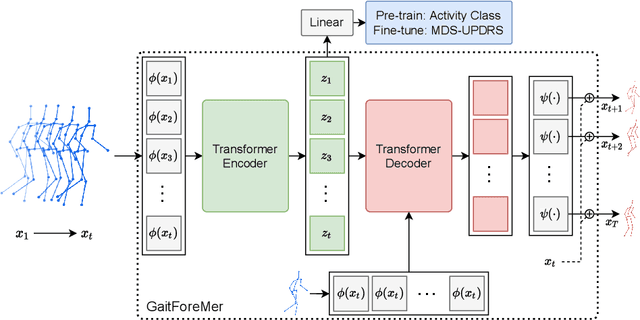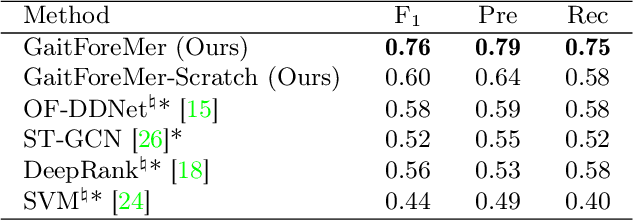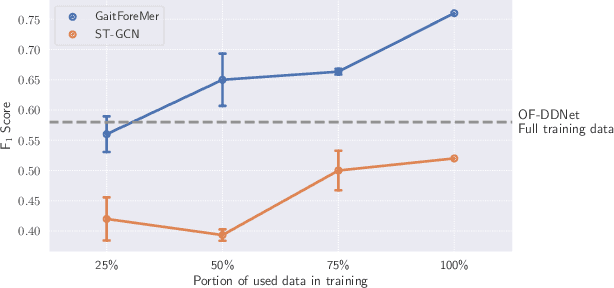Kathleen L. Poston
Dept. of Neurology and Neurological Sciences, Stanford University, Stanford, CA, USA
An Explainable Geometric-Weighted Graph Attention Network for Identifying Functional Networks Associated with Gait Impairment
Jul 24, 2023



Abstract:One of the hallmark symptoms of Parkinson's Disease (PD) is the progressive loss of postural reflexes, which eventually leads to gait difficulties and balance problems. Identifying disruptions in brain function associated with gait impairment could be crucial in better understanding PD motor progression, thus advancing the development of more effective and personalized therapeutics. In this work, we present an explainable, geometric, weighted-graph attention neural network (xGW-GAT) to identify functional networks predictive of the progression of gait difficulties in individuals with PD. xGW-GAT predicts the multi-class gait impairment on the MDS Unified PD Rating Scale (MDS-UPDRS). Our computational- and data-efficient model represents functional connectomes as symmetric positive definite (SPD) matrices on a Riemannian manifold to explicitly encode pairwise interactions of entire connectomes, based on which we learn an attention mask yielding individual- and group-level explainability. Applied to our resting-state functional MRI (rs-fMRI) dataset of individuals with PD, xGW-GAT identifies functional connectivity patterns associated with gait impairment in PD and offers interpretable explanations of functional subnetworks associated with motor impairment. Our model successfully outperforms several existing methods while simultaneously revealing clinically-relevant connectivity patterns. The source code is available at https://github.com/favour-nerrise/xGW-GAT .
GaitForeMer: Self-Supervised Pre-Training of Transformers via Human Motion Forecasting for Few-Shot Gait Impairment Severity Estimation
Jun 30, 2022



Abstract:Parkinson's disease (PD) is a neurological disorder that has a variety of observable motor-related symptoms such as slow movement, tremor, muscular rigidity, and impaired posture. PD is typically diagnosed by evaluating the severity of motor impairments according to scoring systems such as the Movement Disorder Society Unified Parkinson's Disease Rating Scale (MDS-UPDRS). Automated severity prediction using video recordings of individuals provides a promising route for non-intrusive monitoring of motor impairments. However, the limited size of PD gait data hinders model ability and clinical potential. Because of this clinical data scarcity and inspired by the recent advances in self-supervised large-scale language models like GPT-3, we use human motion forecasting as an effective self-supervised pre-training task for the estimation of motor impairment severity. We introduce GaitForeMer, Gait Forecasting and impairment estimation transforMer, which is first pre-trained on public datasets to forecast gait movements and then applied to clinical data to predict MDS-UPDRS gait impairment severity. Our method outperforms previous approaches that rely solely on clinical data by a large margin, achieving an F1 score of 0.76, precision of 0.79, and recall of 0.75. Using GaitForeMer, we show how public human movement data repositories can assist clinical use cases through learning universal motion representations. The code is available at https://github.com/markendo/GaitForeMer .
 Add to Chrome
Add to Chrome Add to Firefox
Add to Firefox Add to Edge
Add to Edge